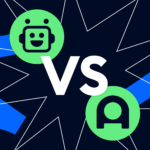I leave the ChatGPT ones Advanced voice mode is enabled as you type this article as an ambient AI companion. Occasionally, I’ll ask you to provide a synonym for an overused word, or some encouragement. About half an hour in, the chatbot breaks our silence and starts speaking to me in Spanish without me asking. I laugh a little and ask what’s going on. “Just a little change? Gotta keep things interesting,” says ChatGPT, now back to English.
While testing the advanced voice mode as part of the early alpha, my interactions with ChatGPT’s new audio feature were entertaining, messy, and surprisingly varied, though it’s worth noting that the features that I had access to were only half of what OpenAI demonstrated when it released the GPT-4o Model in May. The look of the vision we saw in the live demo is slated for a later release, and Sky’s improved voice, which she actor Scarlett Johanssen moved back, has been removed from advanced voice mode and is no longer an option for users.
So what is the current mood? Right now, the advanced voice mode feels reminiscent of when the original text-based ChatGPT dropped in late 2022. It sometimes leads to unimpressive dead ends or turns into empty AI gaps. But other times low-latency conversations click in a way that Apple’s Siri or Amazon’s Alexa never do for me, and I feel compelled to keep chatting for the fun of it. It’s the kind of AI tool you’ll show your family over the holidays for a laugh.
OpenAI gave access to the feature to a few WIRED reporters a week after the initial announcement, but pulled it the next morning, citing security concerns. Two months later, OpenAI released advanced voice mode to a small group of users and released GPT-4o’s system card, a white paper describing the red team’s efforts, which the company considers security risks and the mitigation measures the company has in place. taken to reduce damage.
Curious to try it yourself? Here’s what you need to know about the larger rollout of advanced voice mode and my first impressions of ChatGPT’s new voice feature, to help you get started.
So when is the full release?
OpenAI released an audio-only advanced voice mode for some ChatGPT Plus users in late July, and the alpha pool still seems relatively small. The company plans to enable it for all subscribers sometime this fall. Niko Felix, a spokesperson for OpenAI, did not share any additional details when asked about the release schedule.
Screen and video sharing were a core part of the original demo, but are not available in this alpha test. OpenAI plans to add these aspects eventually, but it’s also unclear when that will happen.
If you are a ChatGPT Plus subscriber, you will receive an email from OpenAI when Advanced Voice Mode is available. Once it’s in your account, you can switch between standard i advanced at the top of the app screen when ChatGPT voice mode is open. I was able to test the alpha version on an iPhone and a Galaxy Fold.
My first impressions of ChatGPT’s advanced voice mode
Within the first hour of talking to him, I knew I love interrupting ChatGPT. It’s not like you’d talk to a human, but having the new ability to cut off ChatGPT mid-sentence and request a different version of the output seems like a dynamic improvement and a standout feature.
Early adopters who were excited about the original demos may be frustrated to access a version of Advanced Voice Mode that is restricted with more rails than expected. For example, while generative AI singing was a key component of the launch demos, with whispered lullabies and multiple voices trying to harmonize, AI serenades are absent from the alpha build.



